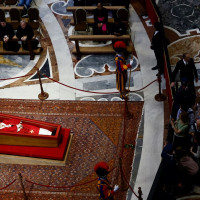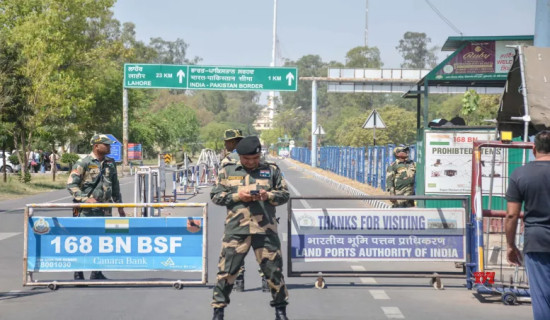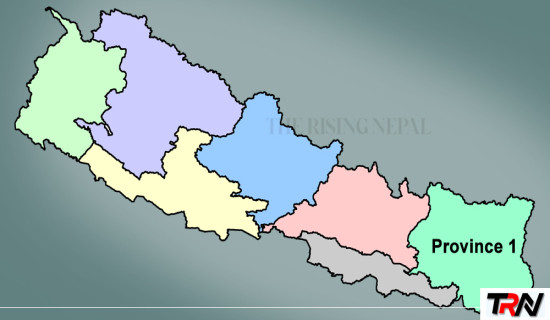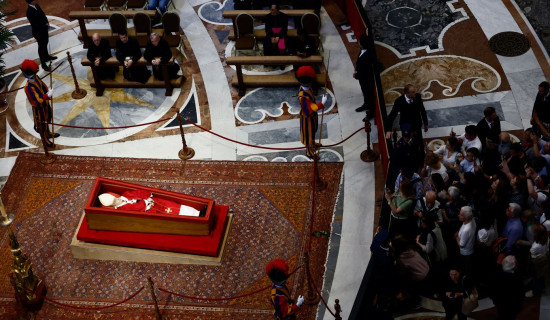- Friday, 25 April 2025
Blue blood from horseshoe crabs is valuable for medicine, but bird needs them for food
Portland, Maine, Aug,1: A primordial sea animal that lives on the tidal mudflats of the East Coast and serves as a linchpin for the production of vital medicines stands to benefit from new protective standards.
But conservationists who have been trying for years to save a declining bird species the red knot that depends on horseshoe crabs fear the protections still don't go far enough.
Drug and medical device makers are dependent on the valuable blue blood of the crabs helmet-shaped invertebrates that have scuttled in the ocean and tidal pools for more than 400 million years to test for potentially dangerous impurities. The animals are drained of some of their blood and returned to the environment, but many die from the bleeding.
Recent revisions to guidelines for handling the animals should keep more alive through the process, regulators said. The animals not really true crabs but rather more closely related to land-dwelling invertebrates such as spiders and scorpions are declining in some of their East Coast range.
"They were here before the dinosaurs," said Glenn Gauvry, president of Ecological Research & Development Group, a Delaware-based nonprofit that advocates for horseshoe crab conservation. "And they’re having problems because the new kids on the block, us, haven’t learned to appreciate the elders."
The harvest of horseshoe crabs, which are also caught for bait in the commercial fishing industry, has emerged as a critical issue for conservationists in recent years because of the creature's role in coastal ecosystems. The crabs' eggs are vitally important food for a declining subspecies of a bird called the red knot — a rust-colored, migratory shorebird listed as threatened under the Endangered Species Act.
The birds, which migrate some 19,000 miles roundtrip from South America to Canada and must stop to eat along the way, need stronger protection of horseshoe crabs to survive, said Bethany Kraft, senior director for coastal conservation with the Audubon Society.
Kraft and other wildlife advocates said the fact the guidelines for handling crabs are voluntary and not mandatory leaves the red knot at risk.
“Making sure there is enough to fuel these birds on this massive, insanely long flight is just critical,” Kraft said. “There's very clear linkage between horseshoe crabs and the survival of the red knot in the coming decades.”
The horseshoe crabs are valuable because their blood can be manufactured into limulus amebocyte lysate, or LAL, that is used to detect pathogens in indispensable medicines such as injectable antibiotics.
The crabs are collected by fishermen by hand or via trawlers for use by biomedical companies, then their blood is separated and proteins within their white blood cells are processed. It takes dozens of the crabs to produce enough blood to fill a single glass tube with its blood, which contains immune cells sensitive to bacteria.
There are only five federally licensed manufacturers on the East Coast that process horseshoe crab blood. The blood is often described by activist groups as worth $15,000 a quart (liter), though some members of the industry say that figure is impossible to verify.
Regulators estimate about 15% of the crabs die in the bleeding process. In 2021, that meant about 112,000 crabs died, said Caitlin Starks, a senior fishery management plan coordinator with the Atlantic States Marine Fisheries Commission. (AP)







-square-thumb.jpg)








